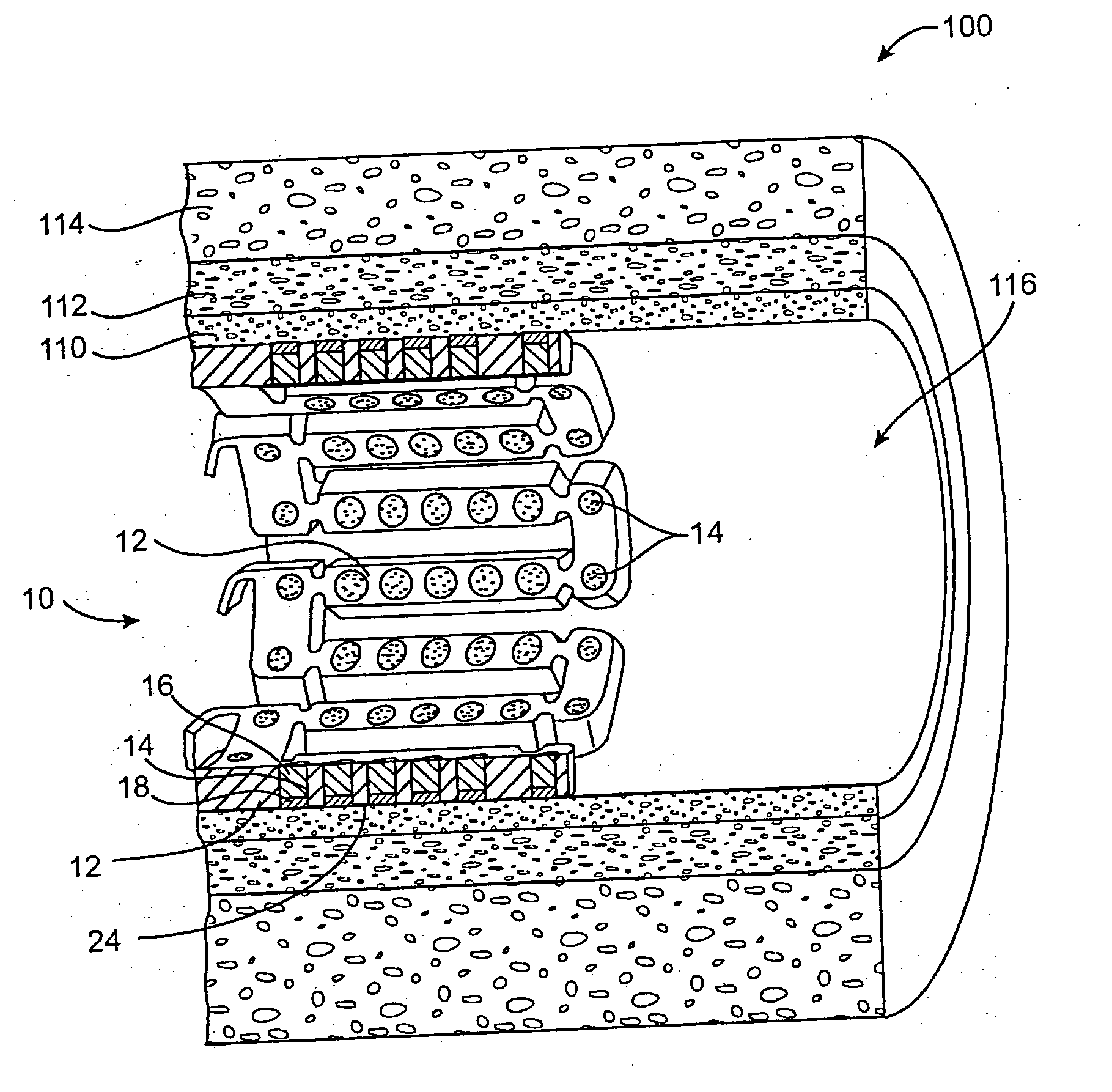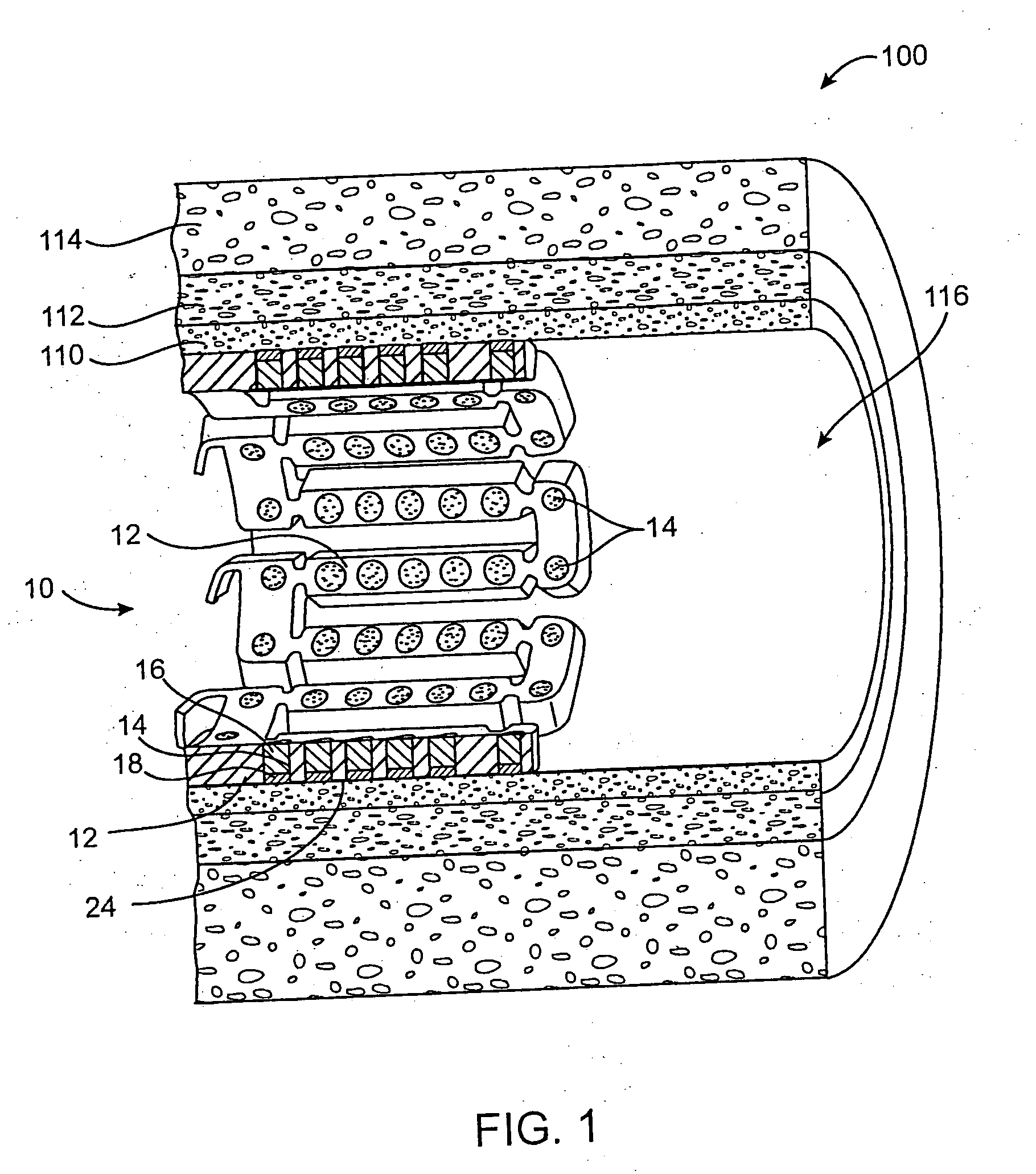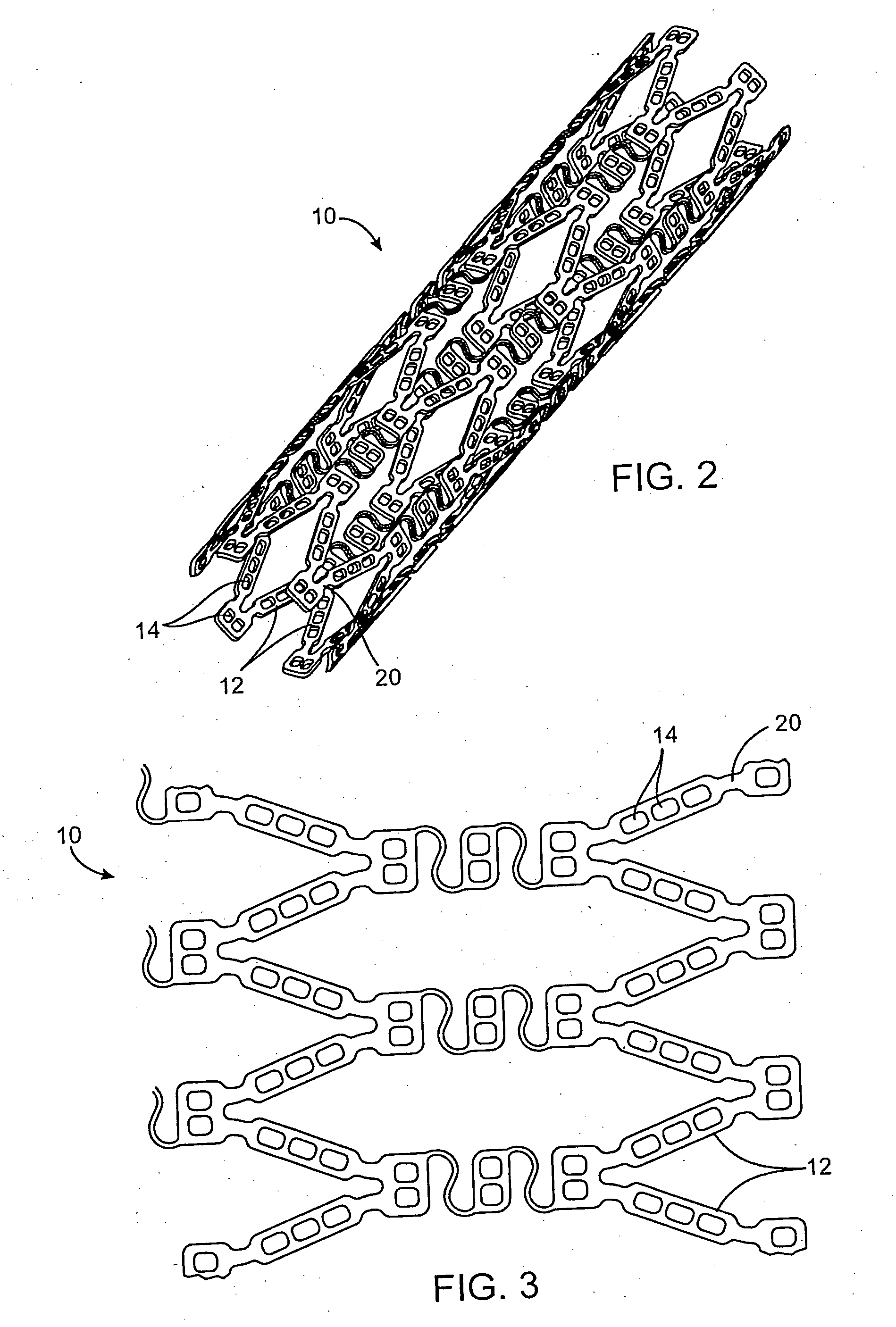Method and apparatus for reducing tissue damage after ischemic injury
a tissue damage and ischemic injury technology, applied in the direction of prosthesis, blood vessels, peptide/protein ingredients, etc., can solve the problems of tissue damage, cellular necrosis, and loss of heart function, so as to reduce tissue damage, reduce tissue damage, and reduce ischemic injury of surrounding myocardial cells
- Summary
- Abstract
- Description
- Claims
- Application Information
AI Technical Summary
Benefits of technology
Problems solved by technology
Method used
Image
Examples
example 1
[0068] In this example, a drug delivery stent substantially equivalent to the stent illustrated in FIGS. 2 and 3 having an expanded size of about 3 mm×17 mm is loaded with insulin in the following manner. The stent is positioned on a mandrel and an optional quick degrading layer is deposited into the openings in the stent. The quick degrading layer is low molecular weight PLGA provided on the luminal side to protect the subsequent layers during transport, storage, and delivery. The layers described herein are deposited in a dropwise manner and are delivered in liquid form by use of a suitable organic solvent, such as DMSO, NMP, or DMAc. A plurality of layers of insulin and low molecular weight PLGA matrix are then deposited into the openings to form an inlay of drug for the reduction of ischemic injury. The insulin and polymer matrix are combined and deposited in a manner to achieve a drug delivery profile which results in about 70% of the total drug released in about the first 2 ho...
example 2
[0070] In this example, a drug delivery stent substantially equivalent to the stent illustrated in FIGS. 2 and 3 having an expanded size of about 3 mm×17 mm is loaded with insulin with a total dosage of about 230 micrograms in the following manner. The stent is positioned on a mandrel and an optional quick degrading layer is deposited into the openings in the stent. The quick degrading layer is PLGA. A plurality of layers of insulin and a poloxamer block copolymer of PEO and PPO (Pluronic F127) are then deposited into the openings to form an inlay of drug for the reduction of ischemic injury. The insulin and polymer matrix are combined at a ratio of about 33:67 and deposited in a manner to achieve a drug delivery profile similar to that described in Example 1. A barrier layer of high molecular weight PLGA, a slow degrading polymer, is deposited over the insulin layers to prevent the insulin from migrating to the mural side of the stent and the vessel walls. The degradation rate of t...
example 3
[0071] In this example, a drug delivery stent substantially equivalent to the stent illustrated in FIGS. 2 and 3 having an expanded size of about 3 mm×17 mm is loaded with insulin with a total dosage of about 230 micrograms and with paclitaxel with a total dosage of about 10-30 micrograms in the following manner. The stent is positioned on a mandrel and an optional quick degrading layer is deposited into the openings in the stent. The quick degrading layer is PLGA. A plurality of layers of insulin and low molecular weight PLGA are then deposited into the openings to form an inlay of drug for the reduction of ischemic injury. The insulin and polymer matrix are combined and deposited in a manner to achieve a drug delivery profile similar to that described in Example 1. A plurality of layers of high molecular weight PLGA, a slow degrading polymer, and paclitaxel are deposited over the insulin layers to provide delivery of the paxlitaxel to the mural side of the stent and the vessel wal...
PUM
| Property | Measurement | Unit |
|---|---|---|
| thickness | aaaaa | aaaaa |
| thickness | aaaaa | aaaaa |
| thickness | aaaaa | aaaaa |
Abstract
Description
Claims
Application Information
 Login to View More
Login to View More - R&D
- Intellectual Property
- Life Sciences
- Materials
- Tech Scout
- Unparalleled Data Quality
- Higher Quality Content
- 60% Fewer Hallucinations
Browse by: Latest US Patents, China's latest patents, Technical Efficacy Thesaurus, Application Domain, Technology Topic, Popular Technical Reports.
© 2025 PatSnap. All rights reserved.Legal|Privacy policy|Modern Slavery Act Transparency Statement|Sitemap|About US| Contact US: help@patsnap.com



